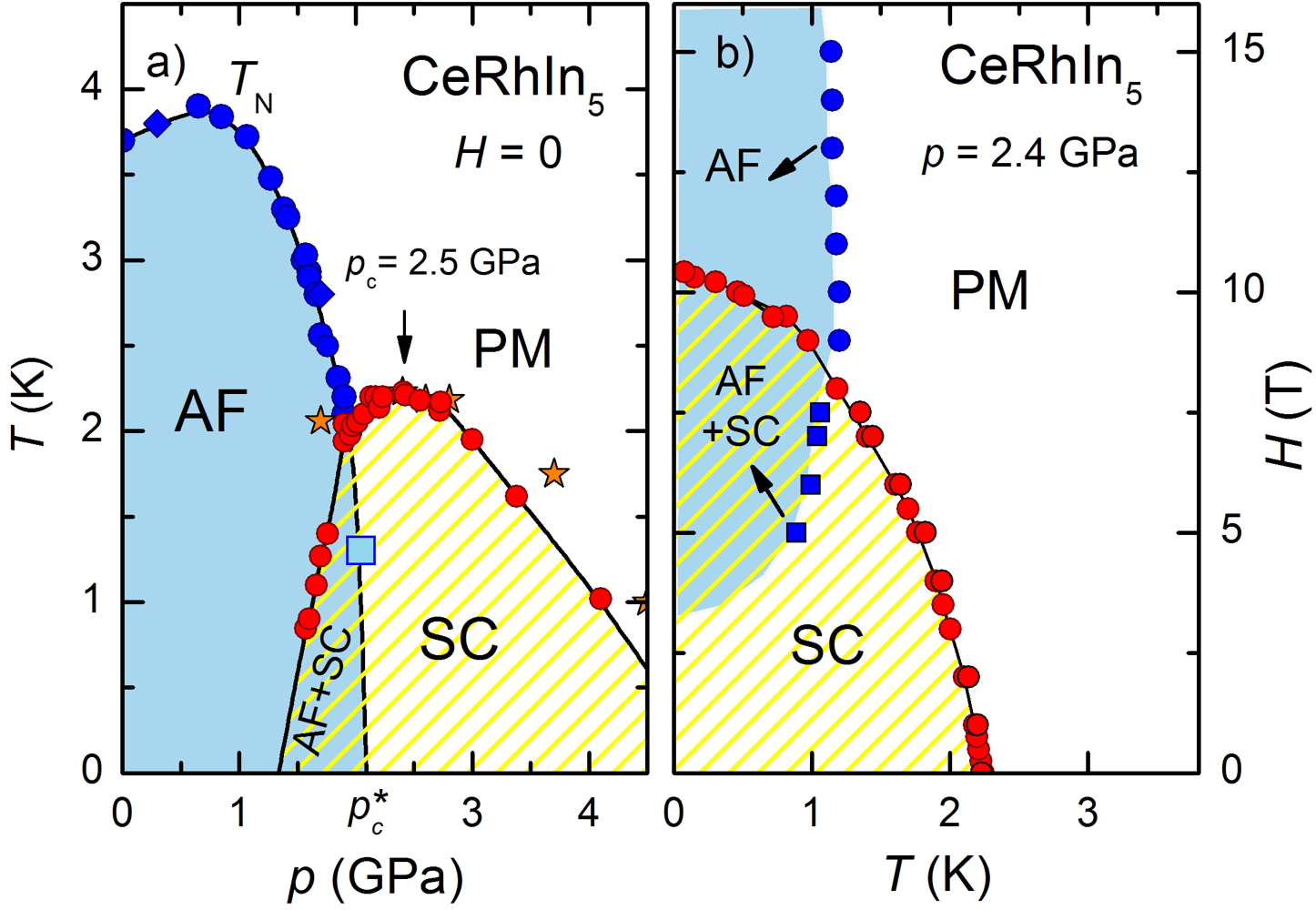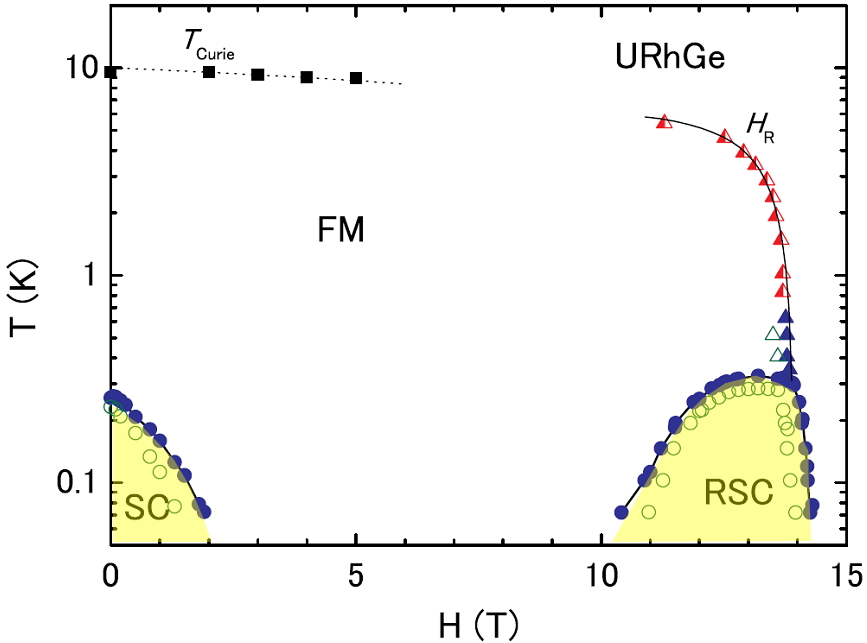Superconductivity was first observed in 1911 by Heike Kammerlin Onnes in Leiden is starting from these days still a very active research area in physics. A complete microscopic theory of superconductivity was given in 1957 by Bardeen, Cooper, and Schrieffer (so-called BCS theory) which explains the superconducting state by a condensation of electron pairs interacting through the exchange of phonons.
Unconventional superconductors are materials that display superconductivity, but that do not conform to BCS theory. The organic material (TMTSF)
2PF
6 and the heavy fermion superconductor CeCu
2Si
2 have been the first material which show unconventional superconductivity. One main characteristic of an unconventional superconductor is that the Cooper pairs have non-zero angular momentum and the symmetry of the gap function is lower than that of the normal state Fermi surface. The pairing interaction of Cooper pairs is a non-phonon mechanism but can be due to magnetic fluctuations or fluctuations in the electronic density. Thus unconventional superconductivity is often found in the systems close to a zero temperature quantum phase transition.
We are particulary interested in systems showing:

• coexistence of ferromagnetism and superconductivity like UGe
2, URhGe, or UCoGe

• superconductivity close to a antiferromagnetic quantum critical point (CeCoIn
5, CeRhIn
5, ...)

• superconductivity in competition with unconventional ordered states:
e.g. "hidden order" in URu
2Si
2, quadrupolar ordering in PrOs
4Sb
12, ...

• new iron pnictide superconductors and related systems (
e.g. FeSe, ...).

Unconventional superconductivity occurs at the border to magnetism. The so-called Ce 115 family offers a nice possibility to study the competition of both ground states as both the magnetic ordering temperature T
N and the superconducting transition temperature T
c can be of the same order of magnitude.
E.g. the pressure temperature phase diagram of CeRhIn
5 has been studied in detail by ac calorimetry, resistivity and neutron scattering experiments. Antiferromagnetism and superconductivity can coexist in a small pressure range. Surprisingly we could show that the antiferromagnetism can re-enter inside the superconducting phase by applying a magnetic field.

Usually it is expected that in an conventional superconductor itinerant ferromagnetism and superconductivity do not coexist as the ferromagnetic order impedes the formation of singlet pairs. Surprisingly, we could show that itinerant ferromagnetism and superconductivity can coexist in some Uranium based heavy fermion superconductors as UGe
2, URhGe, and UCoGe. In these compounds superconductivity appears well below the ferromagnetic ordering temperature, but as function of pressure close to a magnetic instability. Here the superconductivity is mediated by the strong ferromagnetic fluctuations and electrons are paired in triplet states.
An external magnetic field can strongly modify the magnetic fluctuations and we could even show that superconductivity can reenter under high magnetic fields.
 Further reading:
Knebel G, Aoki D, Braithwaite D, Brison JP, Lapertot G, Raymond S, Salce B and Flouquet J
Further reading:
Knebel G, Aoki D, Braithwaite D, Brison JP, Lapertot G, Raymond S, Salce B and Flouquet J
Quantum criticality, antiferromagnetism and superconductivity.
Aoki D, Bourdarot F, Flouquet J, Hassinger E, Knebel G, Raymond S and Villaume A
Hidden Order State in URu
2Si2
2.
Aoki D, Flouquet J, Knebe Gl, Miyake A, Hassinger E, Mineev V, Huxley A, Levy F and Sheikin I
Ferromagnetic superconductivity.